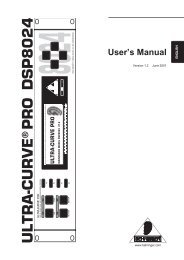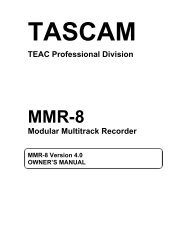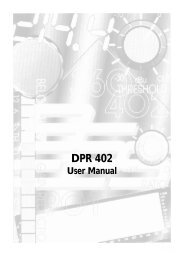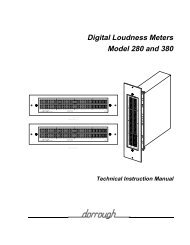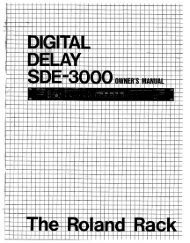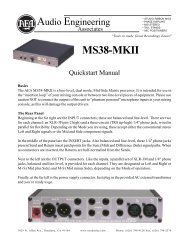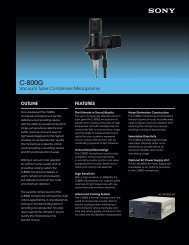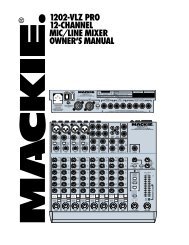XLogic SuperAnalogue Channel Owner's Manual - Solid State Logic
XLogic SuperAnalogue Channel Owner's Manual - Solid State Logic
XLogic SuperAnalogue Channel Owner's Manual - Solid State Logic
Create successful ePaper yourself
Turn your PDF publications into a flip-book with our unique Google optimized e-Paper software.
Installation<br />
3.0 Installation<br />
3.1 Voltage Selection<br />
Before connecting the mains supply ensure that the voltage range selector next to the IEC socket on the rear of<br />
the unit is correctly set. The input setting must be confirmed before applying power. The input module can be<br />
configured to be one of 4 voltage settings. The setting is indicated by a plastic pin protruding through the<br />
appropriate hole in the fuse panel.<br />
The setting is altered by a small vertical PCB which can be fitted in 4 positions.<br />
To change the setting:<br />
Switch off and remove the IEC lead.<br />
Using a small flat-bladed screwdriver, lever open the fuse panel to the right of the connector.<br />
At the right hand side is a vertical PCB with a plastic key which indicates the setting. Using pliers, pull<br />
out the PCB.<br />
The PCB has to be rotated until the desired voltage is shown along the edge which plugs into the module.<br />
The plastic key (and this bit is quite fiddly) must also be rotated so that it points out of the module and so<br />
that the round pin aligns with the appropriate hole in the cover panel; (refer to the diagrams opposite).<br />
Re-insert the PCB and replace the fuse panel. The plastic pin should project through the appropriate hole.<br />
3.2 Mounting<br />
The <strong>X<strong>Logic</strong></strong> unit is designed to be rack-mounted. It is 1 RU (44.5mm/1.75 inch) high. Its depth is:<br />
325 mm/12.8 inches not including heatsink.<br />
365 mm/14.3 inches including heatsink<br />
400 mm/15.75 inches including connectors<br />
Please note that the rack ears of early <strong>X<strong>Logic</strong></strong> <strong>Channel</strong> units are not capable of supporting the full weight of the<br />
unit. Therefore if the unit is to be rack-mounted, it must either be mounted on suitable rack shelves or be fitted<br />
with a pair of support brackets to reinforce the rack ears – do not rely on just the basic front panel for rack-mounting<br />
the unit. Later <strong>X<strong>Logic</strong></strong> <strong>Channel</strong> units incorporate reinforcement brackets into the chassis and so are suitable for<br />
direct rack-mounting. Should your unit require them, pairs of support brackets (SSL Part No.: 629943XR) are<br />
available from your local distributor.<br />
A 1RU space should be left above each unit to ensure adequate ventilation.<br />
3.3 Connection<br />
There are four connectors on the rear panel and a single combined XLR and mono jack on the front panel.<br />
The rear panel connections are:<br />
Input A (female XLR)<br />
Output (male XLR)<br />
Key Input (female XLR)<br />
Link Bus (TRS jack socket)<br />
The front panel connections are:<br />
Input B/Instrument (combined female XLR and mono jack)<br />
Inputs A and B are can be used for either microphone or line level signals. The HI Z switch should be selected<br />
when using line level signals as some devices may not be able to provide full output level in to the low (1.2kΩ)<br />
impedance of the standard microphone input.<br />
The mono jack provides a very high (1MΩ) impedance input, designed for use with guitar pickups, piezo electric<br />
bugs etc.<br />
Connect the output of the unit to your recorder, workstation or mixing desk. Connect the input to a suitable<br />
source. If you have more than one unit the dynamics LINK jacks on the rear of the units should be connected<br />
together using a mono or stereo jack–to–jack cable.<br />
Page 7



